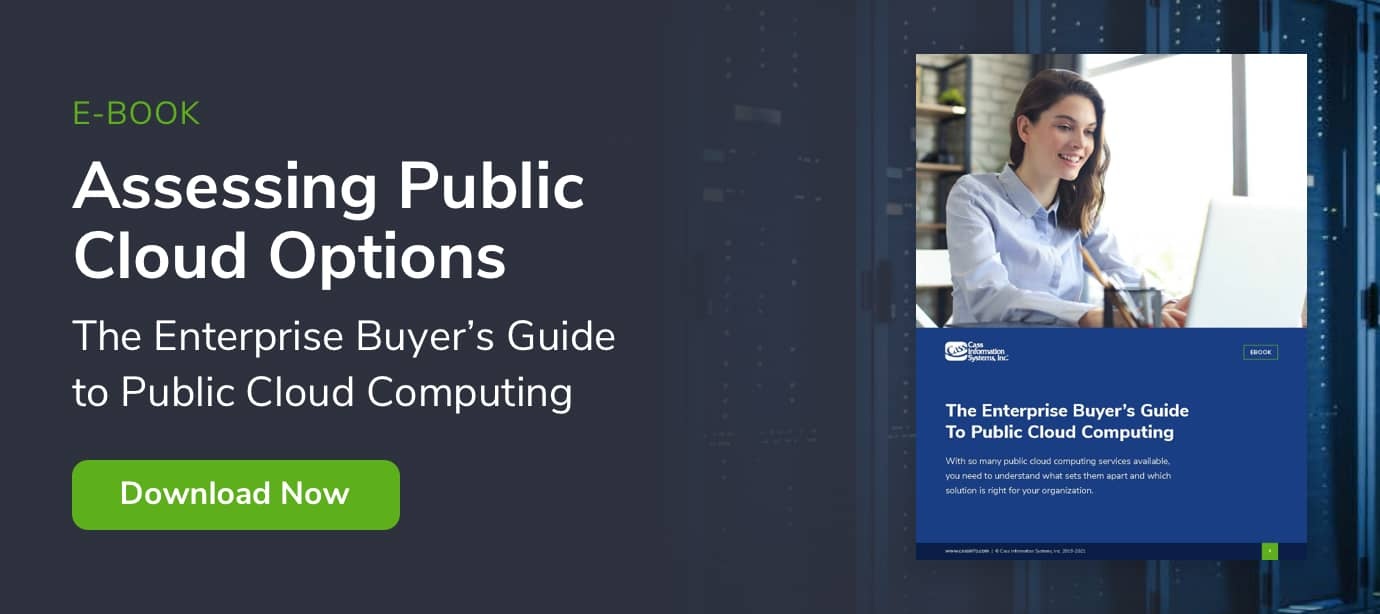It’s unlikely you’d let fluctuating costs in your personal bank account go unnoticed or ignore unmanaged expenses in your department's monthly spending. Yet, many businesses still neglect the importance of regular cloud auditing.
Your cloud environment supports some of the most integral aspects of your business, for example your customer data, innovative applications, and mission-critical processes. By reviewing, auditing, and optimizing your cloud infrastructure you can pin-point assets, spend, or capacity measures that are causing incompetent or unnecessary expenditure. This allows your business to gain better financial control and achieve greater visibility over your cloud estate.
It’s vital to have clear visibility over both the management and control aspects of your cloud infrastructure, so, why have many businesses lost track, and why should you regularly audit your IaaS environment?
Speedy Cloud Adoption
The rapid adoption of cloud has led to businesses losing track of key control measures of their cloud infrastructure – such as billing and usage data or capacity management. The urgency to move workloads to AWS, Azure, and Google cloud services has contributed to this, and the rate of cloud adoption is now higher than ever.
It’s predicted that 83% of enterprise workloads will be in the cloud by 2020 and the increasing availability of public cloud services has left many businesses finding it hard to ignore the cost and efficiency benefits of the cloud.
However, for many companies, the ease of cloud adoption has led to discrepancies over the size or scale of their cloud environment. Numerous people within a business may purchase cloud services on behalf of their department, leaving IT directors unaware of growing cloud infrastructures within their own organisations. Moreover, unaccounted for cloud infrastructure has left businesses exposed to new shadow IT security risks and poor cloud asset management.
By auditing your cloud resources and environment, you can identify what hidden cloud infrastructure you might have. Likewise, your business can also wrangle the rising costs of extra cloud capacity or identify where you can shutdown unused or unnecessary workloads. Not only can this help you optimize your cloud inventory
Uncapped Capacity
It's easy for businesses to over-estimate capacity when deploying cloud solutions, and many are paying for more space than they need. Companies often take a cautious approach and select larger IaaS capacities in case of unforeseen higher usage, however, this creates over-provisioned cloud environments that rarely get downsized.
Without meaningful control, the expansion of their cloud estate goes unmonitored – leading to overspending on cloud infrastructure that may have been upsold to them in the first place. What's more, 'cloud management' is handled by cloud service providers or their partners, meaning that conflicting interests between their services and actual necessary spend can arise. The extra capacity or overspend on cloud infrastructure that is managed by external sources creates uncapped capacity and unmonitored cloud costs.
However, by performing a cloud audit, you can ensure your service providers never overcharge your organization, and that you only pay for the resources you use. Moreover, you can identify where you're paying for extraneous capacity – allowing you to take back full control of your capacity management and cloud estate.
Poor Cost Visibility
Costs that were devised when your cloud infrastructure was first deployed may not be relevant down the line. In fact, the full impact and costs of your cloud environment are only fully understood once you've ran your estate for a longer period of time. When businesses don't have the internal expertise to successfully assess whether they're spending the correct amount or have an external cloud provider directing them, they may be sent in costly directions.
When you audit your IaaS resources, you can perform an in-depth analysis of your cloud inventory and eliminate your additional costs. If businesses monitor their cloud resources and environment for just a month, they can infer a wealth of data that can be used to optimize and reduce cloud-related spend. From there, powerful cloud management platforms can automatically track consumption-to-budget measures, and provide real-time alerts in case of future overspend.
Audit Your Cloud Today
A robust cloud auditing platform can provide a firm starting point for truly optimizing your cloud environment. Most importantly, it can enhance visibility over your cloud infrastructure, pin-point areas where you can cut-down your cloud-related expenditure, and reduce capacity from unnecessary or hidden cloud services.
It's understandable that auditing your cloud infrastructure is uncharted territory for some, and many businesses may lack the skills, resources, or strategy to perform an in-depth audit.
However, if you'd like to learn how automated cost optimization platforms and robust reporting can alleviate the pressure of cloud auditing, read our free brochure.
For more information on public cloud computing in general, download our comprehensive e-book.

